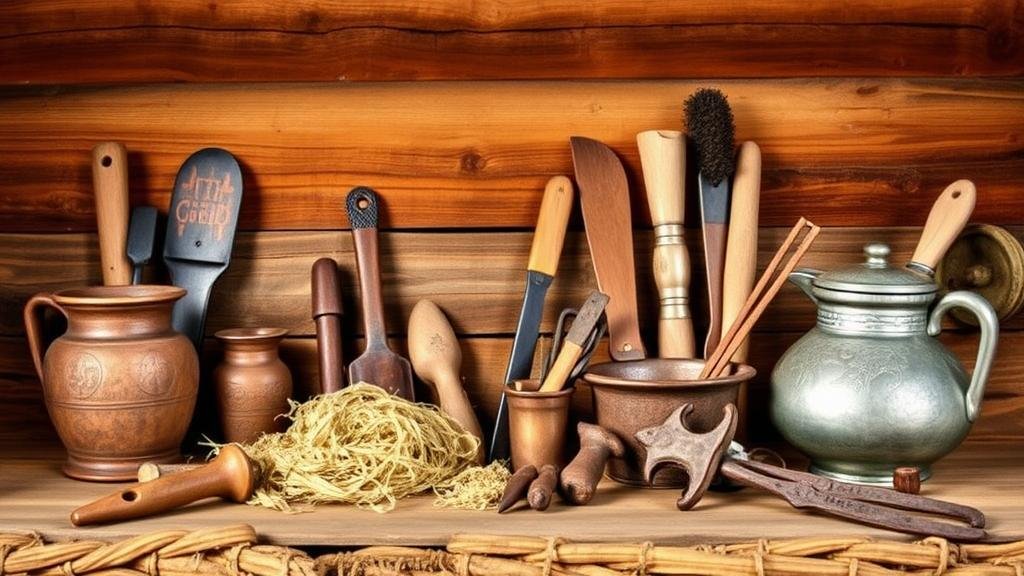Exploring Historical Farmlands for Farming Tools and Personal Items
Exploring Historical Farmlands for Farming Tools and Personal Items
The exploration of historical farmlands offers valuable insights into agricultural practices, daily life, and cultural heritage. This article delves into the significance of excavating farming tools and personal items from historical farmlands, focusing on methods, findings, and their implications for understanding past societies.
Understanding Historical Farmlands
Historical farmlands are areas cultivated by previous generations, often bearing witness to the technological advancements and cultural transformations of their time. These lands frequently hold rich layers of soil that encapsulate artifacts, ranging from farming tools to personal belongings. study of these artifacts provides archaeologists and historians with data on agricultural methods, economic conditions, and social structures.
The Archaeological Significance of Farming Tools
Farming tools are crucial for understanding the agricultural practices and technological progress of past civilizations. Examples include:
- Plows: The transition from hand-held hoes to plows typified the agricultural revolution. Discovering plows in historical farmlands can reveal timelines for the adoption of more efficient farming techniques.
- Harvesting Equipment: Tools like sickles and scythes indicate the types of crops grown and the seasonality of agricultural practices. For example, the presence of specialized tools for grain harvesting suggests a society engaged in large-scale grain production.
The analysis of farming tools not only highlights the technology used but also offers insights into trade relationships among communities. For example, sleighs and carts found in northern European farmlands indicate connections to regional trade networks that facilitated the exchange of agricultural produce and tools.
Uncovering Personal Items: A Window into Daily Life
Also to agricultural implements, personal items discovered at excavation sites shed light on the daily lives of individuals. Such items include:
- Jewelry and Ornaments: The discovery of personal adornments reveals details about social status, cultural values, and artistic expression. For example, findings of bronze and gold jewelry in sites across the Nile River Valley demonstrate the importance of personal wealth in ancient Egyptian society.
- Household Objects: Items like clay pots, tools, and utensils can inform researchers about dietary habits and domestic practices, revealing how families prepared and consumed food.
Artifacts also tell stories of individuals. For example, the discovery of a childs toy, such as a wooden top in a 19th-century farming community, might evoke discussions about childhood and family life, highlighting how agricultural labor influenced family structures and responsibilities.
Case Studies: Notable Archaeological Finds
Several notable archaeological projects underscore the wealth of information gleaned from historical farmlands:
- The Kentucky Archaeological Survey: This survey revealed a variety of late 19th-century farming tools in the Bluegrass region, including steel plows and saddle implements, contributing insights into the shift from subsistence farming to more commercial practices in the American South.
- The Roman Villa Excavation in Italy: Artefacts such as mosaics, agricultural tools, and pottery provided critical data on Roman agricultural innovations, such as crop rotation and advanced irrigation techniques, thereby enhancing our understanding of the economic foundations of the Roman Empire.
Methodologies for Exploring Farmlands
Exploring historical farmlands requires a combination of traditional archaeological methods and modern technology:
- Survey Techniques: Ground surveys and remote sensing techniques like LiDAR (Light Detection and Ranging) help locate potential excavation sites by revealing ground features obscured by vegetation.
- Excavation Methods: Stratigraphic excavation allows archaeologists to understand the chronological sequence of artifact deposits, vital for contextual analysis.
- Artifact Analysis: Examining materials and construction techniques offers insights into relationships between different agricultural practices and technological development.
The innovative combination of these methodologies ensures a comprehensive approach to understanding the significance of the findings.
Challenges and Ethical Considerations
While examining historical farmlands presents opportunities for understanding human history, it also raises ethical concerns:
- Land Ownership Issues: Exploring farmlands often involves navigating ownership rights and land use permissions, which can complicate archaeological access.
- Preservation of Artifacts: Ensuring that significant artifacts are preserved and protected from damage or looting is crucial, calling for the establishment of preservation protocols.
Also, engaging with local communities in the excavation process fosters respect for cultural heritage and can enhance the narratives created by the findings.
Conclusion
The exploration of historical farmlands for farming tools and personal items provides a significant avenue for understanding agricultural life and cultural practices of past societies. By analyzing these artifacts, researchers can piece together narratives of technological evolution, social systems, and daily living conditions. As methodologies continue to advance, the potential for discovering new insights from historical farmlands remains vast, pointing to the enduring relevance of agriculture in shaping human history.
Actionable Takeaways
- Understand the importance of preserving historical farmlands as valuable archaeological resources.
- Promote community involvement in archaeological projects to enhance cultural heritage narratives.
- Stay informed about advancements in archaeological methodologies that facilitate exploration and analysis of farmlands.



